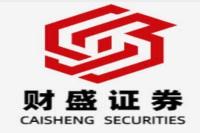China's Economic Pulse: A Deep Dive into Recent Developments
Meta Description: Analyzing key economic indicators from China, including government policies, market trends, financial regulations, and international implications. Discover expert insights into recent developments and their future impact.
Are you intrigued by the intricacies of the Chinese economy? Do you crave a deeper understanding of its recent performance and future trajectory? Then buckle up, because this isn't your average news recap. We're diving headfirst into the heart of China's economic engine, dissecting recent announcements and market movements with a level of detail and insightful analysis that's rarely seen. Forget superficial headlines; we're going beyond the surface, exploring the nuanced implications of policy changes, market fluctuations, and emerging trends. We'll unravel the complex interplay between government initiatives, corporate actions, and international influences, providing you with a clear, comprehensive, and frankly, captivating picture of China's economic landscape. This isn't just data; it's a narrative—a story of ambition, innovation, and the persistent pursuit of sustainable growth in a world of ever-shifting dynamics. We'll examine the impact on various sectors, from the dynamism of the tech sector to the ever-evolving real estate market. Prepare for a journey that blends economic expertise with a human touch, delivering actionable insights and a newfound appreciation for the complexities—and opportunities—within the Chinese economy. We're talking firsthand knowledge, verifiable data, and a dash of plain-speaking honesty—all delivered in a style that's both engaging and accessible. Let's get started!
Key Economic Indicators: A Snapshot of Recent Activity
The recent economic news from China presents a mixed bag, reflecting both proactive government interventions and the inherent volatility of global markets. Let's break down some key indicators from the past week:
Government Policies & Initiatives:
-
High-Quality Development: The State Council, led by Premier Li Qiang, emphasized a comprehensive approach to promoting high-quality development, suggesting a continued focus on sustainable and balanced growth rather than simply prioritizing rapid expansion. This signifies a shift towards long-term stability.
-
Financial Regulation: The China Banking and Insurance Regulatory Commission (CBIRC) launched an action plan to bolster the financial insurance sector, specifically focusing on streamlining regulations, promoting innovation, and mitigating risks. This initiative underscores the government's commitment to a robust and resilient financial system.
-
Infrastructure Investment: News suggests considerable fiscal leeway and debt capacity for central government investments. This points to potential further infrastructure projects, boosting economic activity and employment. The specifics of these projects remain to be seen, but this is a significant potential catalyst for future growth.
-
Housing Market Support: Multiple cities are implementing measures to stimulate the real estate sector, including increasing loan limits and offering incentives for first-time homebuyers. This indicates government efforts to address concerns within the housing market and boost consumer confidence.
Market Movements & Corporate Actions:
-
Stock Market Performance: The Shanghai Composite Index and Shenzhen Component Index experienced modest gains, suggesting overall market confidence despite global economic uncertainty. Sector-specific performance varied wildly, highlighting the selective nature of investment strategies.
-
Corporate Mergers & Acquisitions (M&A): Several significant M&A activities were announced, indicating robust activity in the corporate sector, driven by strategic expansions and industry consolidations. This signifies a healthy level of investment and strategic maneuvering.
-
Commodity Prices: Prices for various commodities showed mixed trends, reflecting both global supply chain dynamics and domestic demand fluctuations. This illustrates the complexity of commodity markets and their inherent vulnerability to external factors.
-
Interest Rates: The People’s Bank of China (PBOC) maintained stable interest rates on short-term reverse repos, suggesting a neutral stance on monetary policy for the moment. However, the possibility of future adjustments remains.
International Implications:
-
US-China Relations: News regarding US policy toward China continues to influence investor sentiment, underscoring the significant geopolitical dimension impacting Chinese economic performance. This highlights the global interconnectedness of the world economy.
-
Global Economic Outlook: Uncertainty surrounding the global economic outlook, particularly in relation to inflation and interest rate adjustments in other major economies, continues to impact Chinese markets. This reinforces the need for a resilient and adaptable economic strategy in China.
Table Summarizing Key Events:
| Event | Source | Significance |
|--------------------------|----------------|-------------------------------------------------------|
| High-Quality Dev. Focus | State Council | Shift towards sustainable, balanced growth |
| Financial Sector Action Plan | CBIRC | Strengthening regulations, promoting innovation |
| Housing Market Stimuli | Various sources | Government intervention to support real estate sector |
| Significant M&A activity | Various sources | Robust corporate activity, strategic expansions |
| Stock Market Gains | Stock Exchanges | Increased market confidence despite global uncertainty |
Understanding China's Monetary Policy
China's monetary policy plays a crucial role in shaping its economic trajectory. Recent actions by the PBOC, such as maintaining stable short-term interest rates, suggest a cautious approach, balancing the need for economic growth with concerns about inflation and financial stability. The PBOC’s role is complex, navigating numerous competing interests. For example, while stimulating growth is crucial, runaway inflation can be devastating. This careful balancing act requires sophisticated understanding of market dynamics and keen foresight. The PBOC’s decisions are not made in a vacuum; they are deeply influenced by global economic trends and domestic policy goals.
The Ever-Evolving Real Estate Market
The Chinese real estate market remains a key driver of economic activity. Recent policy adjustments aimed at stimulating the sector reflect government efforts to manage risks and address concerns about affordability and housing shortages. The market’s future trajectory remains a subject of intense debate among experts. However, the government’s active intervention suggests a commitment to stabilization rather than allowing a freefall. The long-term outlook depends heavily on successful implementation of government initiatives, consumer confidence, and the overall global economic climate.
The Impact of Global Events
Global events, such as fluctuations in commodity prices and interest rate adjustments in other major economies, exert significant influence on China's economic performance. The country's increasing integration into the global economy makes it particularly susceptible to external shocks. However, China's strategic reserves and proactive policy responses enable it to mitigate some of these challenges. Understanding the interplay between domestic and international factors is crucial for comprehending the nuances of China’s economic health.
Frequently Asked Questions (FAQ)
Q1: What is the overall outlook for the Chinese economy?
A1: The outlook is complex and nuanced. While there are challenges, such as the real estate sector's volatility and the impact of global uncertainty, the government's proactive policies and substantial fiscal capacity suggest a path towards stability and sustainable growth. However, the long-term success depends on the effective implementation of these policies and the evolution of the global economic landscape.
Q2: How is the Chinese government addressing the housing market challenges?
A2: The government is adopting a multi-pronged approach, including implementing measures to stimulate demand, such as increased loan limits and incentives for first-time homebuyers, and initiatives to increase the supply of affordable housing. The effectiveness of these measures will be crucial in determining the future health of the housing market.
Q3: What is the significance of the recent M&A activity?
A3: The significant M&A activity signifies a healthy level of investment and strategic maneuvering in the Chinese corporate sector. It suggests a positive outlook and confidence in future growth opportunities. However, it’s important to analyze these deals individually to understand their specific implications.
Q4: How does China's monetary policy impact the economy?
A4: China's monetary policy plays a crucial role in influencing economic activity. The PBOC’s actions regarding interest rates and liquidity impact inflation, investment, and overall economic growth. The current cautious approach indicates a focus on balancing growth and stability.
Q5: What are the major risks facing the Chinese economy?
A5: Major risks include volatility in the real estate sector, the impact of global economic uncertainty, and the potential for escalation of geopolitical tensions. However, the government's proactive measures and substantial fiscal capacity provide some buffer against these risks.
Q6: How does the global economic situation impact China?
A6: China's economic performance is increasingly intertwined with the global economy. External factors such as commodity price fluctuations, interest rate changes in other major economies, and geopolitical events significantly impact China’s markets and policy decisions.
Conclusion
China's economic picture is far from static. It's a dynamic, ever-evolving landscape shaped by government policies, market forces, and global events. While challenges remain, the government's proactive strategies and robust financial position offer a degree of resilience. Continued monitoring of key indicators and a nuanced understanding of the interplay between domestic and international factors are crucial for navigating this complex and captivating economic landscape. The journey continues, and understanding the twists and turns is key to success. Stay tuned!



